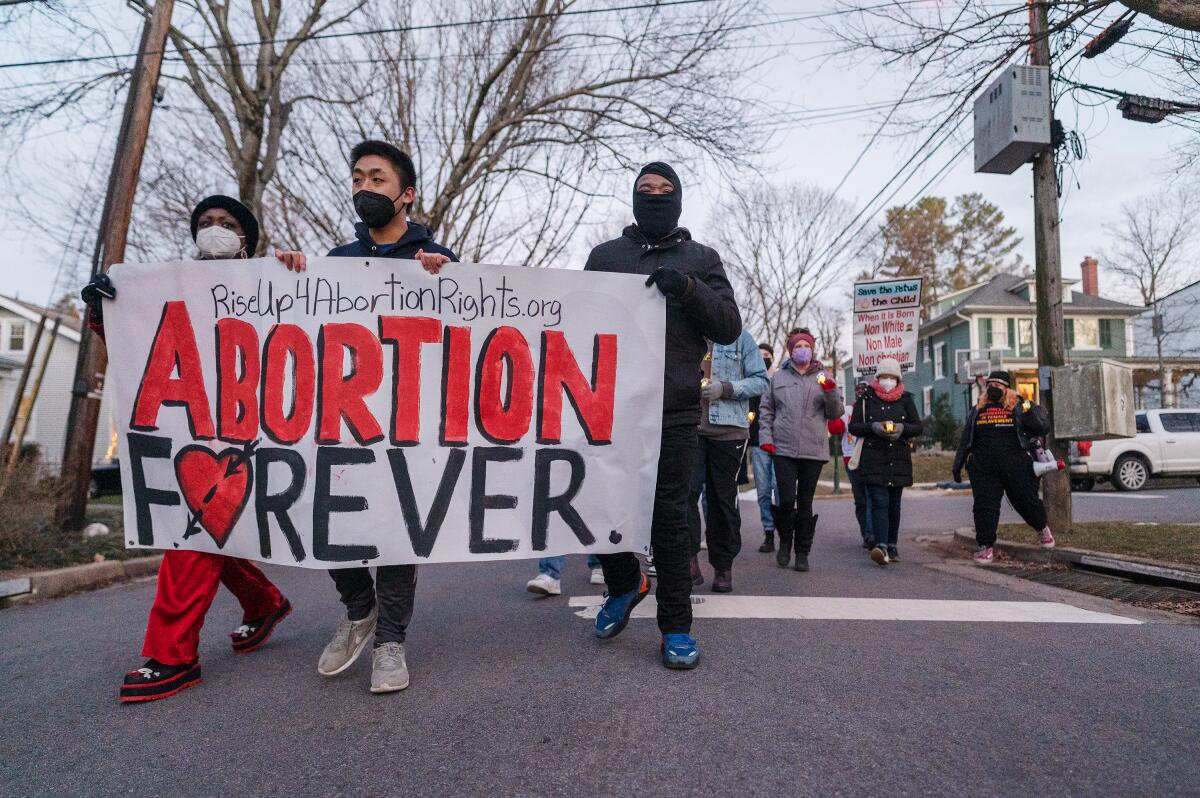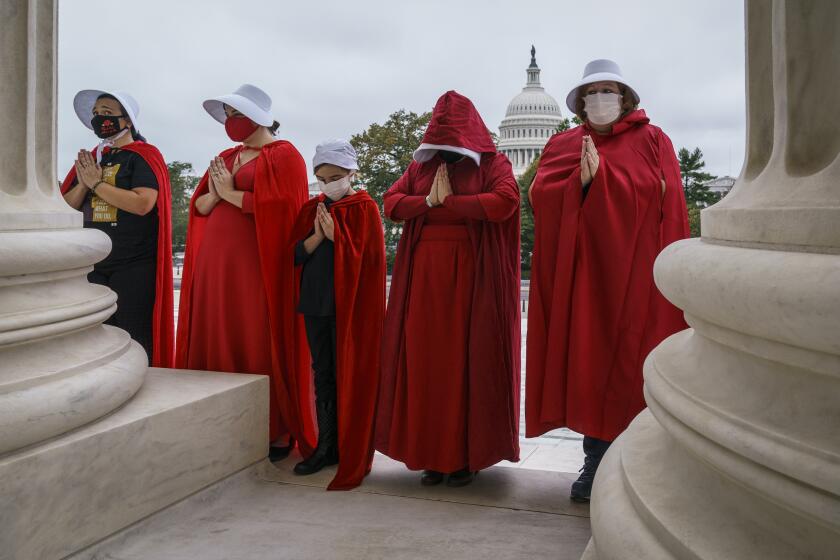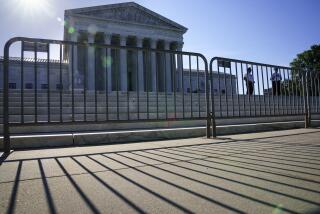Column: Abortion rights activists are targeting Supreme Court justices’ homes. That’s fine by me

- Share via
Before we delve into the ethics of peacefully protesting in front of a Supreme Court justice’s home, I’d like to remind you about some of the havoc wrought by abortion foes after the court legalized abortion in 1973.
In 1986, the clinic of abortion doctor George Tiller was firebombed. In 1993, an antiabortion protester shot Tiller in both arms as he drove to work. In 2009, he was murdered by a religious extremist in the vestibule of his church.
I would remind you, too, that over the last 45 years, according to the National Abortion Federation, there have been 10 other murders, 26 attempted murders, 42 bombings, 194 incidents of arson and thousands of other “incidents of criminal activities” directed at abortion providers, their staffs and clinic escorts.
So when I hear people freaking out about Saturday’s peaceful protests in front of the Chevy Chase, Md., homes of Justices John G. Roberts Jr. and Brett M. Kavanaugh, or a vigil Monday evening in front of Justice Samuel A. Alito Jr.’s home in Alexandria, Va., I just can’t get too worked up about it.
Sure, it’s unnerving to be picketed at home, but that’s life in a (mostly) free society.
Police were on the scene, protesters were relatively low-key.
“You don’t get to take away my bodily autonomy and ... enjoy your Saturday night at home,” said protester Nikki Enfield, who spoke to a local TV reporter in front of Kavanaugh’s home. “You can do one or the other.”
That was about as threatening as things got, so not very.
On Alito’s block, the protesters were even lighthearted, with some trolling him by chanting, “I bet that he likes Nickelback,” a reference to the oft-mocked Canadian rock band.
Are the conservative Supreme Court justices really as driven by personal belief, not legal grounding, as they seem? The depressing answer is yes.
If they had been able to protest outside the Supreme Court itself, perhaps the protesters would not have targeted the justices’ neighborhoods in the first place. But that was not an option.
A few days after Alito’s draft opinion overturning Roe vs. Wade was leaked, the court was encircled by 8-foot, non-scalable fencing.
John Becker, a Catholics for Choice spokesman, told ABC News the security measures appear “ominous and disproportionate to what has actually been transpiring on that plaza.”
God forbid Americans should exercise their right to protest on the very site where women are being deprived of the right to control their bodies, families and fates.
“Because it’s been impossible to reach [Alito] at the Supreme Court (especially now with the enormous fences), we will do it at his home,” the group ShutDownDC.org, which organized the vigil, announced on its website. “At the foot of his driveway, on the public street, we will light candles and speakers will share their testimony. We will hold a moment of silence for the rights we know are ours, then walk back together to the meeting location.”
It’s funny in a sick way that an alleged invasion of the justices’ privacy would be such a red line for defenders of the court’s conservative supermajority. The conservative justices and their allies, after all, seem to have no qualms about controlling our wombs by forcing us to bear children we don’t want. That’s what a real invasion of privacy looks like.
And how predictable is it that some of the same clowns who defended the deadly Jan. 6 riot are now hyperventilating about a couple of nonviolent marches on residential streets.
Insurrection apologist Texas Republican Sen. Ted Cruz, who has almost singlehandedly killed irony, described the peaceful protests as “mob violence” and accused President Biden of “literally threatening the lives of these justices by the mob they’re unleashing.”
(I haven’t heard a peep of indignation from Cruz or his Republican colleagues about former Defense Secretary Mark Esper’s claim in his new memoir that President Trump asked whether Black Lives Matter protesters could be shot, at least in the legs. “He thought that the protests made the country look weak,” Esper told NPR.)
Jesse Watters of Fox News repeated as fact — big surprise there — a baseless rumor that the small-scale protests “were enough to force Justice Alito and his entire family into hiding. They’re moved to an undisclosed location.”
The Washington Post debunked the rumor, saying it “doesn’t seem to be based on anything.”
Let me suggest it is based on wishful thinking, the same kind that automatically ascribes the court’s leak to someone on the left, when, as NPR’s Supreme Court reporter Nina Totenberg has said, the only theory that makes sense to veteran court watchers is that “it came from somebody who was afraid this majority might not hold.”
Abcarian: We can’t count on the Supreme Court to save abortion rights. We’ll have to do it ourselves
A new strategy is needed to preserve reproductive rights. Two legal titans of abortion rights propose a ‘long-term moon shot’ as a way forward.
Over the years, courts have weighed in on whether protesting in front of someone’s home is a protected form of expression. Generally, those cases have involved antiabortion protesters picketing the homes of doctors who perform abortions. What is the higher value, courts ponder, freedom of expression or privacy?
In general, courts say that some limits are OK because the government has a substantial interest in protecting residential privacy. But that usually doesn’t apply to marching through a neighborhood, only to picketing in front of a particular residence.
On Monday, the Senate unanimously passed a bill that would extend police protection to the families of the justices, who already receive protection. I think that’s great, and there’s no reason the House should not pass it too.
I don’t object to protesters disrupting the peace of neighborhoods where Supreme Court justices live, as long as they remain peaceful.
So the justices will be slightly inconvenienced at home? Big deal.
That’s nothing compared with the cost they impose on Americans who may be about to lose control over their own bodies.
More to Read
A cure for the common opinion
Get thought-provoking perspectives with our weekly newsletter.
You may occasionally receive promotional content from the Los Angeles Times.














